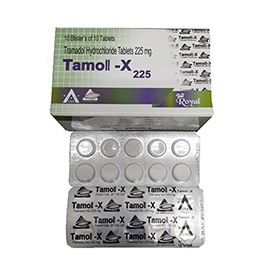As mentioned, tapentadol (Fig. 1) is a centrally acting analgesic that binds to several receptors, and also inhibits norepinephrine (NE) reuptake. This combination effect of tapentadol has been proposed to improve the therapeutic potential of opioid analgesics [Miclescu, 2016]. Moreover, tapentadol has a half-life of around 4 hours and is excreted in the urine and stool.
The main differences between tapentadol and other traditional opioids is that these traditional types – namely, morphine and oxycodone – carry out their analgesic effects through the m-opioid receptor (MOR) agonism [Polati et al., 2019]. In contrast, tapentadol works differently as it produces an analgesic effect in individuals from two separate mechanisms [Polati et al., 2019] (Fig. 2). Once taken, tapentadol is excreted via the kidneys.
Be the first to review “Tapentadol” Cancel reply
Related products
Pain Relievers
Pain Relievers
Pain Relievers
Pain Relievers
Pain Relievers
Pain Relievers
Pain Relievers










Reviews
There are no reviews yet.